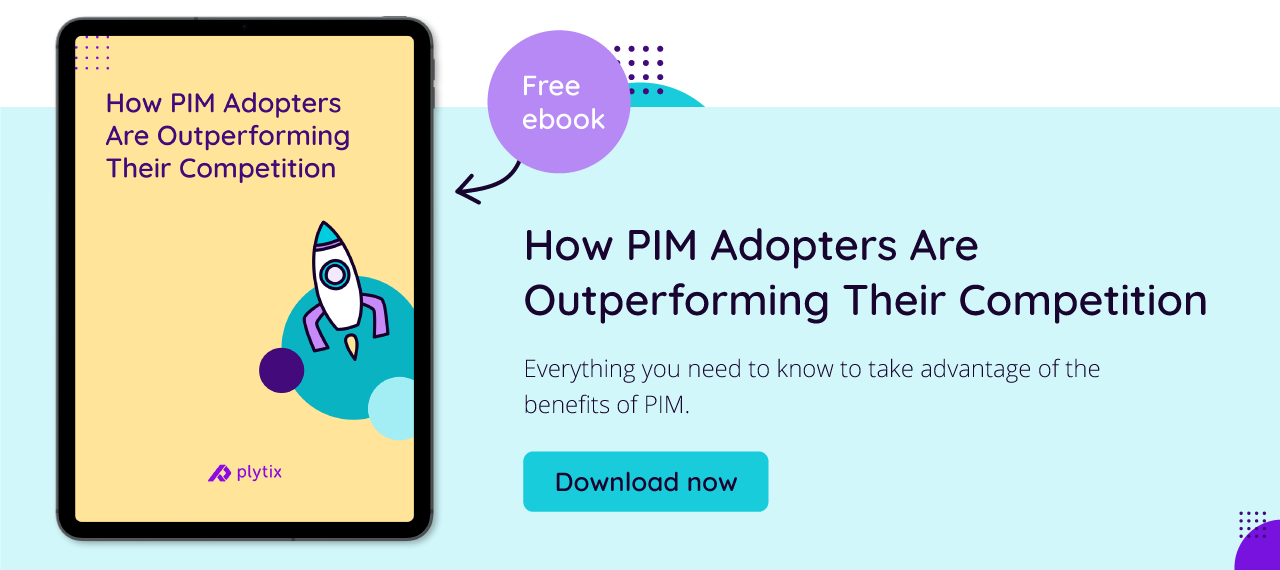Next time you’re at some sort of gathering, here’s a simple game you can play: Pick any simple household object and ask people how many facts they can state about that object. Granted, it’s not the most exciting game to play, but all the same you’ll be amazed at just how much information people can come up with about even the most basic of products. I mean, think about it—for something as simple as a coffee cup, you’ve immediately got at least the dimensions, weight, color, design, material, when it was bought, where it came from, how much it cost…I could go on and on.
Now imagine you’re looking at this from a manufacturer’s point of view (or if you’re reading this article, maybe you don’t have to imagine 👀). How much more data do you think the coffee cup’s manufacturer has to deal with? There’s not just the basic info to consider anymore, no, now you also need to think about the entire design, engineering, and manufacturing process. Where did the materials come from? How much did they cost? How many different designs did that simple coffee cup go through before it made it to the factory? Does that cup meet all the necessary requirements with regard to quality assurance and compliance?
 Bonus question: How happy is the cup?
Bonus question: How happy is the cup?
Questions like this are why manufacturers have to handle a mind-blowing amount of data on a daily basis, and why they risk finding themselves overwhelmed if they don’t have the right tools and software in place to help. One tool that can make manufacturers’ lives a lot easier is product information management software, or PIM (for those in the know).
In this article we’re going to look at how PIM can help manage different types of manufacturing data, what the benefits of using PIM are for manufacturers, and a whole lot more besides. Let’s get started.
Types of manufacturer data that PIM can help with
PIM software is designed to handle a massive range of data types that are essential for manufacturers—so many different types, in fact, that listing them all here would take far too long for you to read (and for me to write, for that matter). Let's look at 10 of the most important types instead, in no particular order.
- Product specifications: Detailed information about products, such as dimensions, materials, technical specifications, and performance characteristics.
- Pricing information: Data related to the pricing of products, including standard prices, discount structures, special offers, and price variations for different markets or customer segments.
- Digital assets: Management of digital content such as images, videos, manuals, and marketing materials related to products. This includes the organization and distribution of these assets across various channels.
- Product lifecycle data: Information related to the lifecycle of a product, from design and development to managing updates, modifications, and variations of products over time, all the way through to discontinuation.
- Regulatory compliance data: Data related to compliance with industry standards and regulations. This includes managing documentation and certifications necessary for different markets.
- Sales and marketing data: Information related to sales channels, marketing campaigns, product placements, and promotional activities.
- Customer feedback and reviews: Customer feedback, reviews, and ratings for products, which can be crucial for product improvement and marketing.
- Multilingual and multiregional data: Product information in multiple languages, adapted to different regional requirements and cultural nuances.
- Quality control data: Information related to quality checks, standards compliance, and product testing results.
- Ecommerce integration: Data necessary for integration with ecommerce platforms, including product listings, descriptions, and online customer interactions.
By processing and organizing these types of data, PIM software makes operations run more smoothly, helps maintain consistency in product information across various platforms, and improves overall efficiency when manufacturers are managing their product portfolios.
Typical uses of PIM by manufacturers
Manufacturers can use PIM software when dealing with product data in numerous different ways, all of which can reduce the amount of money, time, effort, and stress involved in the process. Here are some of the most typical uses of PIM software in a manufacturing context.
- Centralized product data repository: PIM serves as a single source of truth for all product-related information, so manufacturers can count on data accuracy and consistency across their organization.
- Product catalog management: Manufacturers often use PIM to create, manage, and distribute product catalogs across various channels, including print and digital formats.
- Data syndication to multiple channels: PIM software lets manufacturers distribute consistent product information to various sales channels such as ecommerce websites, marketplaces, and retail partners.
- Managing product variations: PIM systems allow for efficient management of multiple product variants, including different sizes, colors, materials, or specifications.
- Market and sales analytics: By integrating with analytics tools, PIM software can provide insights into market trends, product performance, and customer preferences, helping manufacturers to strategize effectively.
- Collaboration and workflow management: PIM systems make collaboration among various departments (like marketing, sales, and product development) a whole lot easier by providing a common platform for sharing and managing product information.
By using PIM software in these ways, manufacturers can significantly step up their product information management game, which, of course, leads to more efficient operations, better market responsiveness, and even happier customers in the end.
Benefits of PIM for manufacturers
As I’m sure you’ve gathered by now, there are countless advantages manufacturers can gain from using Product Information Management software. To avoid overdoing it, though, here are just ten of the top benefits in this handy list—see what you think!
- Improved data accuracy and consistency: PIM software makes it much easier to make sure that all product information is accurate and consistent across all channels. This reduces errors and discrepancies, leading to higher levels of customer trust and satisfaction.
- More efficient data management: By centralizing data management, PIM software streamlines the process of updating and maintaining product information, saving time and reducing the workload staff.
- Higher-quality product data: PIM systems let manufacturers enrich product data with detailed descriptions, high-quality images, and additional information, upping the overall quality of product presentations.
- Easier scalability: As a manufacturer's product range grows, PIM software can easily scale to accommodate additional products and variants without a significant increase in complexity or resource demands.
- Faster time-to-market: Efficient management of product information speeds up the process of introducing new products or updating existing ones, leading to quicker time-to-market.
- Improved customer experience: Detailed and accurate product information helps customers make informed purchasing decisions, leading to a better customer experience, increased loyalty, and fewer costly returns and complaints
- Simpler and faster multichannel distribution: PIM software simplifies the process of distributing product information across various sales channels, including ecommerce platforms, catalogs, and retail partners.
- Improved compliance management: With regulations and standards frequently changing, PIM software helps manage and update compliance-related data efficiently, reducing the risk of non-compliance.
- Effective international expansion: PIM software can manage product information in multiple languages and adapt to different regional market requirements, making international expansion a lot easier.
- Better collaboration and communication: By serving as a single source of truth, PIM systems improve collaboration and communication among different departments within the organization and with external partners.
Put simply, PIM software helps manufacturers manage their product information more effectively, which leads to improved business performance overall. Enough said.
Case Study: Birlea Furniture
One company that’s well aware of the benefits of PIM software is Birlea Furniture.

For 23 years, they strictly operated as a trade-only supplier and manufacturer. However, they’ve now welcomed the idea of selling products to many of the largest reseller websites in the UK.
In 2019, they expanded and purchased a second, high-end brand, Willis & Gambier. This acquisition meant they could target higher spenders alongside their mid-earning customer base—but, as you can imagine, with this audience growth came the need to scale processes.
“Before using a Product Information Management system, uploading content was taking hours and days from work. It became impractical to do it manually, and we soon realized the urgency to find software that could help us centralize data and use feeds to send this content out,” says Michael Prime, Marketing Manager at Birlea. “For years, we worked in data silos. And to be honest, we didn’t know any better.”
Birlea's goal: A centralized place for their product data
“Our teams would work on four different spreadsheets, with data and images located elsewhere, to get the job done. There was no alternative plan to this long-winded approach until we started receiving a ton more post-sale questions (for example, box weight and dimensions) or vendor requirements, which our client service teams weren’t able to find easily. This became very frustrating for internal teams.”
While a central source of truth was their initial requirement, Birlea Furniture also started using Brand Portals (digital, online catalogs) instead of printing brochures. “We were spending up to £12k on printing brochures. And, considering the nature of the industry, by the time we printed, it was almost time to discontinue a product or change the price again. Thankfully, the tool has been a massive saving in this regard.”
The results
In just 9 months, Plytix PIM software has transformed the way Birlea Furniture Ltd manages and shares information.
"We're very happy with the results we’ve achieved. Before, our price lists were just on a spreadsheet, which didn't look very professional. Now, we use the catalog function to replace that, and for many other things: To separate trade and retail price lists, provide customer service with all the data they need, and then, of course, to share product feeds with retailers."
“Each function has automated and streamlined processes for us. We can store and share more assets than we had hoped for, videos and endless amounts of imagery, which is very helpful. We have also made use of the API to feed product stock into our Plytix account. What a dream!"
By implementing PIM software, Birlea have saved:
- £12k on brochure printing
- At least 70% of their time when uploading new products
- Hours of distribution work, as they can new send content to over 100 retail sites in minutes
More about PIM software
As you can see, the benefits of PIM software for manufacturers are pretty impressive. By managing data in a more efficient way, PIM users are able to improve efficiency throughout their organizations, which ultimately leads to faster processes, happier customers, and a more profitable way of doing business.
Want to learn more? Then you can download our free guide to how PIM software is giving companies the edge over their competitors just down below—enjoy!
Frequently Asked Questions
Companies, particularly manufacturers, need a Product Information Management (PIM) system to effectively manage the vast amount of data associated with their products. PIM helps in organizing, updating, and distributing product information consistently across various channels. This includes managing product specifications, pricing, digital assets, product lifecycle data, regulatory compliance, sales and marketing information, and customer feedback. Efficient PIM leads to improved data accuracy, streamlined operations, and enhanced customer experiences.
Distributors require PIM for similar reasons as manufacturers but with a focus on distribution channels. PIM aids in centralizing product information, which ensures consistency and accuracy in the data shared with retailers and customers. It also simplifies the process of updating product information across multiple channels, such as ecommerce platforms and retail partners. This ensures that distributors can efficiently manage product variations, pricing, and promotional information, leading to more effective sales strategies and better customer service.
An example of a Product Information Management (PIM) tool is Plytix PIM, as highlighted in the case study of Birlea Furniture in the article. Plytix PIM is a software solution that helps companies manage and centralize their product data efficiently. In the case of Birlea Furniture, Plytix PIM transformed the way they managed and shared information. It enabled the company to automate and streamline processes like updating product details, sharing product feeds with retailers, and managing digital assets like images and videos. The tool also facilitated the creation of digital catalogs, saving the company significant costs on brochure printing. Additionally, the integration of Plytix PIM with other systems, like their stock management, enhanced overall efficiency. This example illustrates how PIM tools like Plytix can significantly improve data management, distribution, and operational efficiency for companies.
No, PIM is not an ERP (Enterprise Resource Planning) system. While both PIM and ERP systems are crucial for data management in a business, they serve different purposes. An ERP system integrates various business processes, such as finance, HR, and operations, into a single system to streamline processes and information across the organization. On the other hand, PIM specifically focuses on managing product-related information. It's designed to handle the complexity of product data management and ensure the consistency and accuracy of product information across various sales and marketing channels. While PIM can integrate with an ERP system, they are distinct tools within an organization's technology ecosystem.






